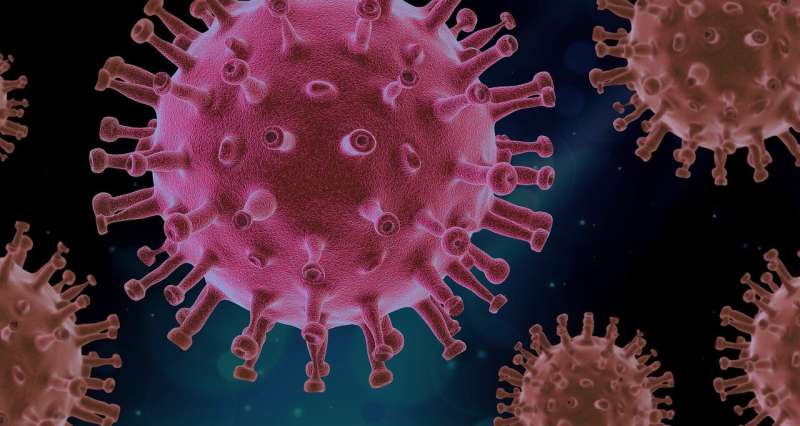Caregivers find remote monitoring during COVID-19 pandemic an unexpected patient safety benefit

In an opinion article appearing online Feb. 25 in the Journal of the American Medical Association, authors from University Hospitals and Case Western Reserve University write about the unexpected patient safety benefit resulting from remote monitoring of patients during the COVID-19 pandemic.
09 mar 2022--Peter Pronovost, MD, Ph.D., Melissa Cole, MSN, and Robert Hughes, DO, discuss that although COVID-19 placed excessive psychological and moral stress and work demands on patients, clinicians, health care organizations and society, the pandemic also advanced patient safety in an unexpected way.
Prior to the pandemic, routine monitoring of patients with continuous pulse oximetry and heart rate devices was dependent on the patient's location within a hospital, usually the intensive care unit (ICU). Pulse oximeters are small electronic devices that clip onto a finger and measure the saturation of oxygen carried in red blood cells. Studies have shown that monitoring with these devices is associated with reduced death rates.
As the pandemic flooded hospitals with patients and filled ICUs, many patients received care outside of the ICU in emergency departments or general medical and surgical units. And, some medical centers advised patients with milder symptoms to stay home.
"One of the major lessons gained from the pandemic was that patients could now be monitored based on risks and needs rather than location in the hospital," said Dr. Pronovost, Chief Quality and Clinical Transformation Officer at UH and Clinical Professor of Anesthesiology and Perioperative Medicine at Case Western Reserve School of Medicine. "Home monitoring and hospital at-home models offer the potential to transform care and potentially allow a substantial proportion of hospitalized patients to receive care from home."
In their paper, the authors review benefits of remote monitoring in the hospital and at home, explore the technology advances that made it possible, describe how government payment policy changes made home monitoring sustainable, and discuss what health systems could do to launch a home monitoring program.
Ms. Cole, Vice President of Integrated Delivery Operations at UH, said that continuous remote monitoring of hospitalized patients in general medical settings not only improves outcomes, but increases accuracy.
"Technological advances have made it possible to monitor some of these patients either at home or in skilled nursing facilities. Things such as wireless monitors, cloud-based platforms and telehealth have allowed health systems to seamlessly use at-home continuous pulse oximeters to monitor patients and help them avoid hospitalizations," said Ms. Cole.
The authors write that an analysis projected remote monitoring to be potentially associated with a lower mortality rate in COVID-19 patients compared with patients without at-home monitoring: "…a mortality rate of 6 per 1,000 patients with COVID-19 compared with 26 per 1,000 patients without at-home monitoring." They write that this analysis also projected 87 percent fewer hospitalizations, 77 percent fewer deaths, and reduced per-patient costs of $11,472 compared with standard care.
"The combined use of telehealth, home health, and remote monitoring could bring some hospital-level-monitoring services to patients in their home," said Ms. Cole.
Despite these advances, however, the authors find that broad hospital and home monitoring services are not widely used by health systems. They outline several barriers that health systems must overcome.
"Health systems need to consider implementing continuous pulse oximetry and heart rate monitoring for all hospitalized patients and emergency department patients," said Dr. Hughes, Medical Director of System Operations and Logistics for UH and Assistant Professor of Emergency Medicine at Case Western Reserve School of Medicine. "With increased census, sicker patients and decreased staffing for most clinical roles, patients are at heightened risk for unrecognized deterioration. Continuous monitoring with a centralized team to monitor could improve safety and reduce workload on clinicians," he said.
Other recommendations are for health systems to create a service line to coordinate this work, to maximize value by learning how to combine and integrate these various technologies, and to create protocols for selecting and enrollment that match the patient's risks and needs with the various types of monitoring.
At University Hospitals, Ms. Cole said experiences from the pandemic helped pave the way in 2021 for UH's Hospital@Home program, the first of its kind in the health system.
"During the early days of the pandemic, we introduced UHRemote, a remote patient monitoring system that allowed us to keep tabs on COVID-19 patients' heartrate and blood oxygenation levels. A team of nurses, each with multiple screens, watched dashboards of patient data and received alerts from wearable devices if a patient's numbers were too high or too low. We learned much from the more than 2,200 patients we cared during that year, and often heard how grateful they were to not be isolated from family and alone in the hospital. We combined the experiences from UHRemote with the decades of experience of our Home Health teams, added in a few more services, and UH Hospital@Home was born," she said.
No comments:
Post a Comment